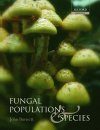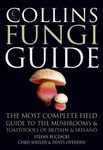![Fungal Populations and Species Fungal Populations and Species]()
Click to have a closer look
About this book
Contents
Customer reviews
Related titles
About this book
Describes the methods used to study the genetics of fungal populations, how species arise and the taxonomic problems they pose.
Contents
BASIC MYCOLOGY; 1. Elements of classification, structure, sexuality, biology and genetics of Fungi; METHODOLOGY; 2. Genetic markers for population studies I. Morphological, physiological and cytological markers; 3. Genetic markers for population studies II. Molecular markers; 4. Defining fungal individuals: ecological, biological and genetical aspects; sampling; 5. Describing and analysing populations: basic genetic and phylogenetic aspects; PROCESSES IN POPULATIONS; 6. The generation of variation I. Mutation and migration; 7. The generation of variation II. The importance and diversity of inbreeding and outbreeding; 7-Annexe Distinguishing between clones and recombinant populations; 8. The generation of variation III. Heterokaryosis, parasexuality, hybridization and polyploidy; 9. Change in gene frequency in fungal populations I. General considerations: selection for oligogenically determined traits; 10. Change in gene frequency in fungal populations II. Natural selection for multigenically determined traits: competition and fitness; 10-Annexe More complex approaches to estimating fitness in fungi; SPECIES AND SPECIATION; 11. Fungal species; 12 Speciation in fungi
Customer Reviews
By: John Burnett
348 pages, B/w illus, figs, tabs, maps
... this book reflects the knowledge and commitment of its author and deserves to sell well as an aid to both teaching and research. MicroBiology Today Fungal Populations and Species is rightly set to become another classic text for anyone with even a passing curiosity for this unique group of organisms. Mycological Research In this book, John Burnett has skilfully brought together in a unique fashion, his highly insightful view on the development and changing opinions on the ecodynamics of the fungal population as new methodologies have been developed and applied and new knowledge gained. That he has done so in such an open and comprehensible manner that does not exclude the non-specialist whilst also representing a highly desirable resource for the experienced mycologist is to his great credit. Mycological Research Throughout the text, considerable care and thought has been given to amplifying potentially difficult concepts, taxonomical terms and nomenclature in a clear and understandable way and the end of each chapter is supported with a highly useful and relevant list for further reading. Mycological Research This book, by one of our most experienced fungal geneticists is both timely and welcome ... lucidly written, well-presented, and illustrated by clear line drawings. It should be studied by all mycologists working around the species level, whether from systematic or applied standpoints ... It deserves to be a mycological best-seller, and should be a priority purchase order for universities and research centres concerned with evolutionary or population biology or genetics, as well as with mycology. Mycotaxon




































